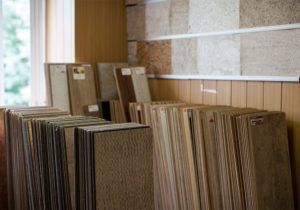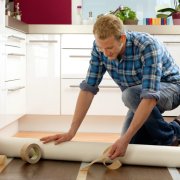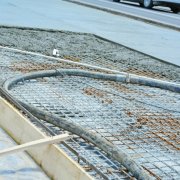Cork floors - an alternative to parquet
The popularity of cork floors in Russia is growing. And if the laminate made of natural wood is predictably the leader in terms of strength, then the cork is beyond competition in terms of heat and sound insulation properties. The demand for cork coatings is explained by their unique properties: they are stable, not afraid of water, do not swell - the cork does not have slits and tears characteristic of solid wood. But most importantly - it’s nice to walk on this floor (sit and even lie!). Cork cover drowns out the sounds of falling steps. It is absolutely environmentally friendly. In modern materials, the problem of durability has also been solved.
Otdelka-expert discussed with Pavel Nazarov, technologist of the I Shop company, how to choose the right cork floor and what to pay special attention to:
- Pavel, what should you pay attention to first of all when choosing cork floors?
- Consumers most often assume that the cork is the warmest (according to the sensations), but we must not forget that this is achieved by the structure of the material itself and that, in turn, makes the cork very sensitive to point load. Cork is the softest of all wood flooring. An important condition for choosing a floor covering, oddly enough, is the qualification of the SUV - the installation master. Also important are the technical characteristics of both the room itself and the base on which the installation will be made. The choice is simple: first, we choose between adhesive and lock coatings, then between printed and natural coatings. Each of the groups and subgroups will have a number of features and differences.
- What is the difference between adhesive and cork floors with a lock?
- The glue method is considered the most correct from a technical point of view, but requires additional costs for related materials. It is also more expensive at the cost of installation by the master, since it requires a higher qualification of a specialist (than a castle). With the adhesive method, special chemistry is used, which can interfere with living in neighboring rooms during work. BUT! the glue laying option allows you to enjoy all the main advantages of the cork: the most warm, soft-touch floor that removes the load from the spine (by the way, in Soviet times, the glue cork was laid in rehabilitation centers for people with spinal diseases). This floor is not afraid of washing wet soldering, temperature changes or high humidity. In a word, the most stable of all wooden flooring.
soldering, temperature changes or high humidity. In a word, the most stable of all wooden flooring.
The lock plug does not require special qualifications of the styling masters (the method resembles the laying of a laminate and can be made quickly and easily). Laying the lock plug does not require additional materials, which also reduces the cost and the final price of the floor. Under the lock plug, the requirements for the base are much more loyal than when choosing a glue analog.
- For what rooms are cork floors NOT suitable?
- The technical characteristics of the room are very important and have many nuances. For example, with a high point load on the floors (studs, metal legs of furniture, the use of armchairs and furniture on wheels) - cork is not the best option for choosing a coating. Castle plug is not recommended in rooms with high humidity, or in rooms with the possibility of periodic exposure to open water (straits, bays). Very often there is no way to lay the adhesive cork due to the poor quality of the base for gluing.
- Is it possible to use cork floors in a country house or a country house that is not heated for winter time?
- In short, yes, it is possible. But a high-quality and detailed answer will require many clarifying questions.So, for example, such a seemingly extraneous condition as whether a house visit is planned in the unheated winter period will greatly affect the answer. Or is it planned during the operation of a country house to be on the floor in street shoes (especially in the autumn-spring period). Since, as we said earlier, cork floors have different groups and subgroups (with their own distinctive characteristics), you must choose carefully. One type may approach a specific situation, the other categorically not.
- An alternative to cork floors: cheaper, more expensive?
- Most often speaking about a cork, use the following gradation: a laminate from a natural tree VS a cork. And if laminate is the leader in terms of strength in this group, then cork is definitely the leader in terms of heat and sound insulation properties. Due to the huge assortment of floor coverings, this question cannot be answered unequivocally, but if you try to find some guidelines, then most likely we would focus on price groups.
Prices are averaged over 1 sq.m: a laminate starts at 300 rubles and up to 3000-4000 rubles for a premium brand, cork starts at an average of 1000 rubles and (like a laminate) rarely exceeds 4000 rubles. Wood, depending on the species, starts at 500 rubles and does not have an upper price range.
One of the important points that is often omitted or not mentioned, and this leads to additional confusion, is the cost of related materials and work.
Consider the example of a regular request for the price: Moscow - cork castle cost of 2500 per sq. M, plus the substrate, baseboards and work per square meter, the price is already 2950 rubles. Parquet piece (oak) cost 1000 rubles, plus related materials and work per square meter, it turns out 5300 rubles. Of course, this is a single example and does not explain a number of nuances and features, but it is a clear example of the erroneous choice of material solely at the cost of the product itself without taking into account additional costs.
Cork floors - an alternative to parquet: Video





